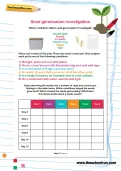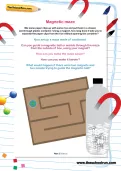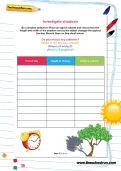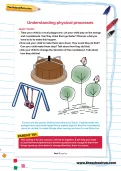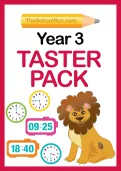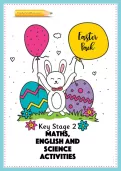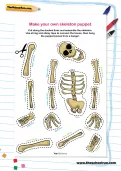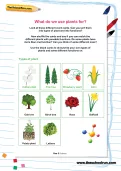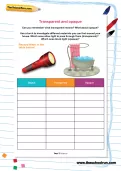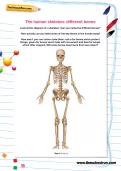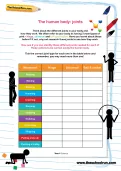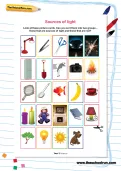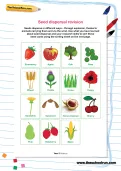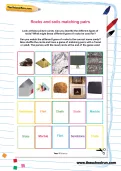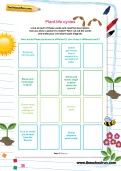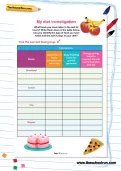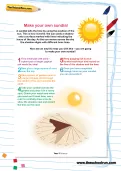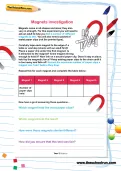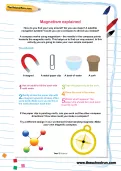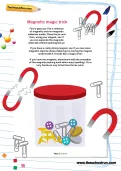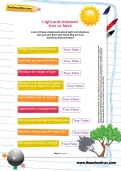Find out what your child will learn in Year 3 English, maths and science, try out a few learning activities and read our top tips about how to support their learning and development in our free, downloadable Year 3 Taster Pack.
or
Register to add to your saved resources
Get ready for some egg-y, chocolate-y, Easter-y fun! The KS2 Easter activities pack has plenty of themed maths, English and science learning opportunities to keep kids busy and learning over the spring break.
or
Register to add to your saved resources
Already a subscriber? to view this content.
With Christmas lists to write, present-delivery schedules to work out, Grotto problems to solve and light and dark experiments to try this bumper pack of festive learning activities will keep your child engaged over the Christmas break.
or
Register to add to your saved resources
Already a subscriber? to view this content.
Cut along the dashed lines and assemble the skeleton. Use string and sticky tape to connect the bones, then hang the puppet pieces from a hanger
or
Register to add to your saved resources
Already a subscriber? to view this content.
Look at these different word cards. Can you sort them into types of plant and into functions? Now shuffle the cards and see if you can match the different plants with possible functions.
or
Register to add to your saved resources
Already a subscriber? to view this content.
Can you remember what transparent means? What about opaque? Use a torch to investigate different materials you can find around your house. Which ones allow light to pass through them (transparent)? Which ones block light (opaque)?
or
Register to add to your saved resources
Already a subscriber? to view this content.
Look at this diagram of a skeleton. Can you name the different bones? How quickly can you label some of the key bones in the human body? Now see if you can colour code them.
or
Register to add to your saved resources
Already a subscriber? to view this content.
Think about the different joints in your body and how they work. We often refer to your body as having 3 main types of joint – hinge, universal and ball and socket. Have you learnt about these before? If not, why not research these joints to see how they work. Now see if you can identify these different joints needed for each of these actions to be carried out by the human body.
or
Register to add to your saved resources
Already a subscriber? to view this content.
Look at these picture cards. Can you sort them into two groups – those that are sources of light and those that are not?
or
Register to add to your saved resources
Already a subscriber? to view this content.
Let's investigate which conditions affect seed germination!
or
Register to add to your saved resources
Seeds disperse in different ways – through explosion, thanks to animals carrying them and via the wind. Use what you have learned about seed dispersal and your research skills to sort these
seed cards using the sorting sheet on the next page.
or
Register to add to your saved resources
Already a subscriber? to view this content.
Look at these picture cards. Can you identify the different types of rocks? What might these different types of rocks be used for? Can you match the different types of rocks to the correct name cards? Now shuffle the cards and have a game of matching pairs with a friend or adult. The person with the most cards at the end of the game wins!
or
Register to add to your saved resources
Already a subscriber? to view this content.
Look at each of these cards and read the description. Can you draw a picture to match? Now cut out the cards and make your own plant cycle diagram. How would these pictures be different if you chose a different plant?
or
Register to add to your saved resources
Already a subscriber? to view this content.
What foods you have eaten in the last 24 hours? Write them down in the table below. Can you identify the type of food you have eaten and the role it plays in your diet?
or
Register to add to your saved resources
Already a subscriber? to view this content.
A sundial tells the time by using the position of the sun. This is how it works: the sun casts a shadow onto a surface marked with lines indicating the hours of the day. As the sun moves across the sky
the shadow aligns with different hour-lines. Do you think you can make your own sundial?
or
Register to add to your saved resources
Already a subscriber? to view this content.
Magnets come in all shapes and sizes; they also vary in strength. This experiment will test the magnetic force of a variety of different magnets.
or
Register to add to your saved resources
Already a subscriber? to view this content.
How do you find your way around? Do you use maps? A satellite navigation system? Could you use a compass to direct you instead? A compass works using magnetism – the needle in the compass points
towards the magnetic north. This helps us to find our way around. In this activity you are going to make your own simple compass!
or
Register to add to your saved resources
Already a subscriber? to view this content.
Mix some paper clips up with some rice and put them in a closed, see-through plastic container. Using a magnet, how long does it take you to separate the paper clips from the rice without opening the container? Now set up a maze made of cardboard. Can you guide a magnetic ball or marble through the maze from the outside of box, using your magnet?
or
Register to add to your saved resources
Find a glass jar. Put a selection of magnetic and non-magnetic materials inside. Close the jar and then, using your magnet, see if you can separate the magnetic materials without opening the jar.
or
Register to add to your saved resources
Already a subscriber? to view this content.
Look at these statements about light and shadows. Can you sort them into those that are true and those that are false?
or
Register to add to your saved resources
Already a subscriber? to view this content.
